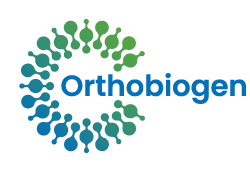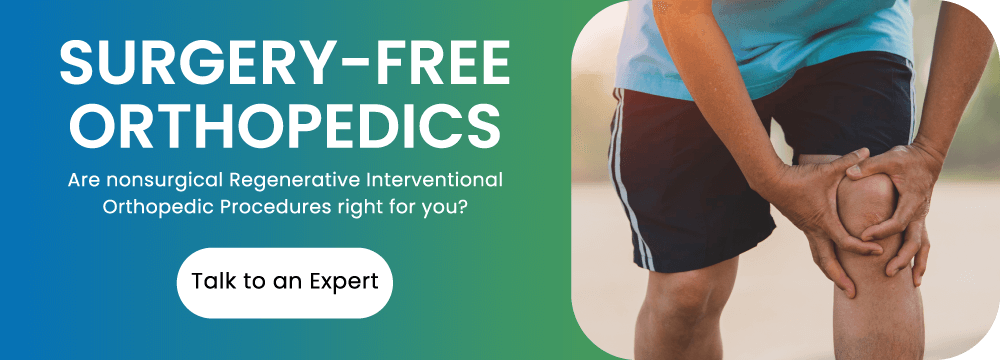Low Back Problems Can Have Some of the Same Symptoms of Sciatic Nerve Pain
One day your leg begins to hurt. It has a burning pain radiating down it, and feels numb and weak; the classic signs of sciatica. But you should not self-diagnose, please see a medical doctor who is a non-surgical spine specialist, as what you think is sciatica might be something else.
What Is Sciatica?
Your sciatic nerve starts outside your lower spine and branches down each of your legs. It is a nerve that conveys motor function and feeling information to and from your legs(1). The term Sciatica refers to pain that radiates along this nerve
Often sciatic pain only affects one side of the body, as only the sciatic nerve in one of your legs is affected. It also is often posture induced, meaning that it can hurt more when you lay on your stomach or in other positions.
Sciatica pain is often felt in the low back, thigh, leg, and foot, with pain in the legs often being more severe than pain in the back. Other places that can potentially be affected are the front of the thigh and leg, the top, outside, and sole of the foot, and the web between the first and second toe. It is often a sharp burning pain, but may also feel like an electric-shock, a throbbing pain, a constant dull ache, or a discomfort that comes and goes. (2, 3,4).
Most-Often Back Pain Causes Sciatic Pain
Sciatic pain is typically caused when the nerve is compressed by conditions like a herniated disc, a bone spur on the spine, narrowing of the spine (lumbar spinal stenosis), or lumbar degeneration of the spinal discs, or spondylolisthesis. Facet joint osteoarthritis can also cause sciatic pain. (See our recent blog on facet joint pain if you think this might be an issue for you.)
There are also several conditions that mimic the shooting, searing pain of sciatica.
Many people refer to any type of leg pain as sciatica, but in fact, there are many causes of leg pain that are not medically classified as sciatica and need to be treated differently. (5)
Examples of problems that are not sciatica but can cause similar symptoms include:(5)
- Joint problems in the spine. Pan can be passed from the spinal joints down into the leg. Technically not sciatica, and requiring different treatment.
- Sacroiliac joint dysfunction may appear to be sciatic pain. Too much or too little motion in the sacroiliac joints can cause pain that radiates down the leg.At the base of your spine exists a triangular bony structure called the sacrum. It joins the pelvis on either side at what is called a Sacroiliac joint. These joints are some of the largest of their kind, and so present a large target for various forms of arthritis.Symptoms of sacroiliac joint pain are diffused pain in the groin, buttocks, hip and lower back. This pain can also radiate down your legs, mimicking how sciatic pain may feel.
- Piriformis syndrome also causes symptoms similar to sciatica. It occurs when the piriformis muscle in the buttocks irritates the sciatic nerve. Technically not sciatica because the problem does not originate in your lower back.
Other things that can cause sacroiliac joint pain are prolonged sitting or standing, pregnancy, traumatic injuries, biochemical stress (caused by things like repeated heavy lifting), and added stress caused by a medical procedure (like lumbar spinal fusion surgery) (6).
Since so many conditions that cause or mimic sciatic pain originate in the lower back, please see a medical doctor who is a non-surgical spinal specialist
It stands to reason that if you see a surgical spine specialist they’re going to recommend surgery
Watch this short video for three things to know from an MD that is a non-surgical spine specialist.
The Video is Under 3 Minutes and Includes Worthwhile Discussion On these Three Main Points:
- Who we don’t see in our office are pilates instructors. Your desk job is not your ally here. Get active.
- Seek a medical doctor who is a non-surgical spine specialist. There may be a non-surgical procedure that is so much less invasive than surgery.
- Just because you have an abnormality on an MRI does NOT mean you need surgery. Some MRI abnormalities ARE normal.
Consider Platelet Rich Plasma (PRP) Procedures to Help Low Back Pain
One possible treatment for low back pain is Platelet Rich Plasma (PRP). This surgery free treatment uses a concentration of your own blood platelets to boost your body’s healing. PRP has been found to be an effective treatment for lower back pain, especially pain caused by the degradation of spinal discs.
A random controlled study, found statistical improvement in patients who received PRP treatments, versus those who were in the control group and did not receive the treatment. Other studies found as much as a 50% improvement in pain level during the first follow-up period. This same study showed that the benefits of PRP continued for at least 1 year after the injections (7).
See how Regenexx procedures have been effective for our patients
Regenexx maintains an active patient registry that tracks patients’ progress or side effects, post-procedure. Our outcomes database contains records on tens of thousands of Regenexx procedures performed by physicians in our network. You can view outcomes by joint or body part.



